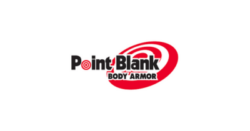Ballistic Helmets
“Ballistic helmets or any other form of armor often involve the most common compromise between weight and protection. Lightweight ballistic helmets with good protective properties often make compromises in terms of price.
Extensive testing of materials has shown that thicker and stiffer ballistic helmets perform better in terms of (rear-facing) deformation and penetration resistance. It is important to consider that even if ballistic helmets can stop a bullet, insufficient force dispersion (deformation) may later result in trauma – potential blindness.
Fiber materials such as aramid fibers (e.g., Kevlar) allow the use of reinforcing epoxies or resins during molding, enhancing the protective properties of ballistic helmets. Therefore, while ballistic helmets may be lightweight, this does not always mean better protection. Helmets are always chosen according to specific needs and the nature of the tasks. Tactical helmets, military helmets, and protective helmets must meet different requirements depending on their purpose. Military and tactical protective helmets are designed to provide maximum protection on the battlefield while maintaining their lightness, whereas police helmets and riot helmets are adapted to the hazards present in urban environments. This makes them heavier, but they have significantly better protective properties. It is important to find a balance between weight, protective properties, and comfort for different helmets to ensure maximum efficiency and user comfort.
Kevlar helmets are known for their high strength and impact resistance, providing effective protection against bullet and shrapnel threats. Tactical ballistic helmets are specifically designed for military operations, ensuring a high level of protection and functionality. Modular helmets allow users to add or remove components as needed, providing flexibility for different missions. Helmets with accessories – visors and night vision attachments offer additional functionality and protection in various situations. Lightweight helmets are preferred by users who need to maintain mobility and reduce fatigue during longer operations.
Military and navy helmets are tailored to specific military requirements, providing protection and comfort in different environments. Impact-resistant helmets (Bump Helmet) are specifically designed to withstand impacts and reduce the risk of injury but do not have ballistic properties.”


